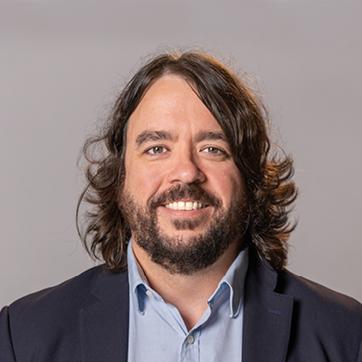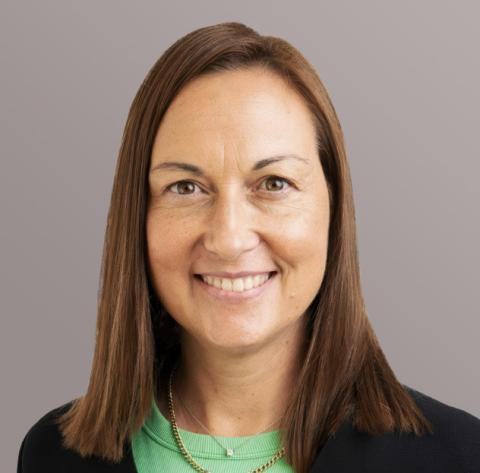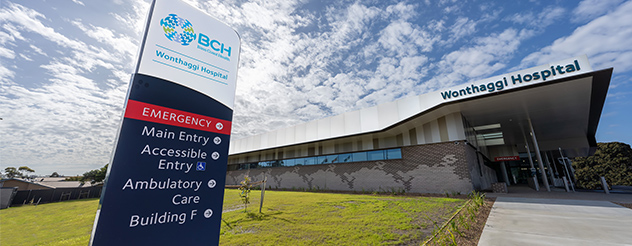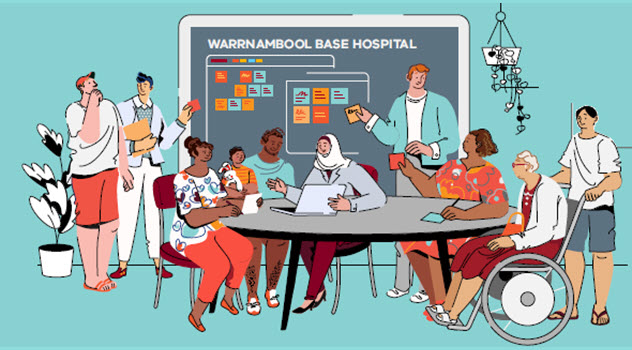IMAGES: Icons slide onto the screen, along with the text ‘The Warrnambool Base Hospital redevelopment’
Voice-over: The Warrnambool Base Hospital redevelopment will transform services giving people in Victoria's southwest
IMAGES: the animation transitions to a map of Victoria; an image of a family and a healthcare worker appears over the top of the map
Voice-over: access to world-class healthcare facilities close to home.
IMAGES: an illustration of a hospital surrounded by icons
Voice-over: Redeveloping a working hospital is a complex job.
IMAGES: illustrations of people and speech bubbles surround each side of the hospital graphic
Voice-over: It involves a lot of planning and many conversations with consumers, community members, and healthcare staff.
IMAGES: an illustration of the hospital exterior, surrounded by flowers and plants
Voice-over: This work helps to shape the services priorities and look and feel of your redeveloped hospital.
IMAGES: the hospital is zoomed out and replaced with images of clocks and lightbulbs
Voice-over: Large projects like this are delivered in stages with key approval points
IMAGES: illustrations of people appear
Voice-over: care when and where it's needed most.
IMAGES: construction workers on a building site
Voice-over: Large projects like this are delivered in stages with key approval points at each stage.
IMAGES: illustration transitions to a group of people collaborating around a table
Voice-over: We started with a health service plan to help determine the community's
IMAGES: image transitions to a group of people holding construction plans, standing in front of illustrations of buildings and the city
Voice-over: healthcare needs, followed by master planning and a feasibility study.
IMAGES: images of books
Voice-over: A business case was then developed, and most importantly, funding secured to deliver the bigger and better hospital. Next,
IMAGES: the books slide off screen and are replaced one by one with images of the different people involved such as architects and healthcare workers
Voice-over: architects, engineers, health planners, hospital staff, and user groups came together to develop a schematic design for the redevelopment, similar to blueprints for a new house.
IMAGES: images slide to reveal an image of the people in the community, surrounded by speech bubbles.
Voice-over: Then it was time for the community to have their say. We invited the community to contribute through pop-up consultation sessions,
IMAGES: image changes to people discussing the plans; an image of a computer
Voice-over: targeted workshops, and an online survey
IMAGES: an image of a car park slides on screen
Voice-over: and we heard that things like car parking,
IMAGES: an image of people sitting on a park bench in a garden slides on screen, as well as hospital signage
Voice-over: outdoor spaces and easy to follow signage were most important to you.
IMAGES: image transitions to a group of people collaborating around a computer screen
Voice-over: Your feedback and ideas were shared with the architect, to help shape family and public spaces in the new facility. Importantly,
IMAGES: image of a cursor drawing within a design program
Voice-over: your input will also help to inform design development. Where we work with healthcare staff and other experts to design and detail exactly what the
IMAGES: the drawing transitions to an image of a building
Voice-over: redevelopment will look like, inside and out. Next,
IMAGES: the image is replaced with several images of different workers
Voice-over: development. To free up space for the new multi-story hospital tower,
IMAGES: image of a worker driving a bulldozer appears; an image of a laundry slides onto screen, next to the bulldozer
Voice-over: some existing buildings will be demolished and services such as linen will be relocated to a new offsite facility.
IMAGES: images of construction workers on a building site
Voice-over: Construction of the redevelopment can then begin. The builder and health service will work together to ensure the hospital
IMAGES: an image of a completed hospital appears in the centre of the screen, and the construction site slides off-screen
Voice-over: continues to operate with minimal disruption throughout construction.
IMAGES: an image of a family speaking with a healthcare worker
Voice-over: Once construction has finished and the new facilities commissioned, your newly redeveloped Warrnambool Base Hospital will officially open its doors.
IMAGE: A screen displays an ‘in partnership with South West Healthcare’ logo. A sliding transition screen then displays the Victorian Health Building Authority and Victoria State Government logos and the web address vhba.vic.gov.au
End of transcript.





















